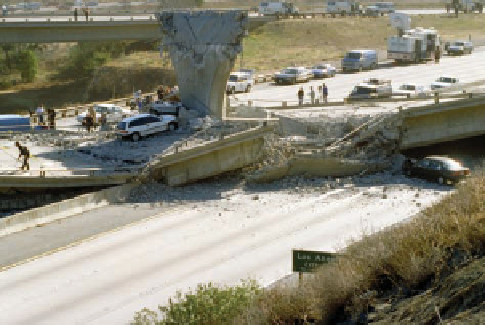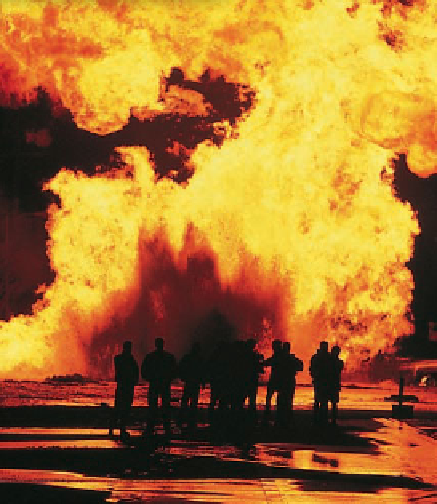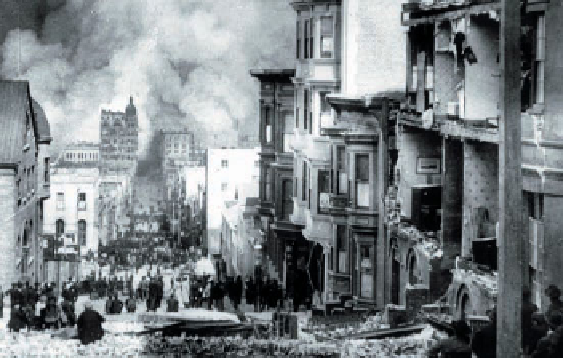Geology Reference
In-Depth Information
4. Rocks on opposite sides of the San Andreas
fault periodically lurch past one another, generat-
ing large earthquakes. The most famous one
destroyed San Francisco on April 18, 1906. It
resulted when 465 km of the fault ruptured,
causing about 6 m of horizontal displacment in
some areas (see Figure 8.1b). It is estimated that
3000 people died. The shaking lasted nearly
1 minute and caused property damage estimated
at $ 400 million in 1906 dollars! Approximately
28,000 buildings were destroyed, many of them by
the three-day fire that raged out of control and
devastated about 12 km
2
of the city.
San Francisco following the 1906 earthquake. This view along Sacramento
Street shows damaged buildings and the approaching fire.
5. Since 1906, the San Andreas fault and its subsidiary
faults have spawned many more earthquakes; one of the
most tragic was centered at Northridge, California, a
small community north of Los Angeles. During the early
morning hours of January 17, 1994, Northridge and
surrounding areas were shaken for 40 seconds. When it
was over, 61 people were dead and thousands injured;
an oil main and at least 250 gas lines had ruptured,
igniting numerous fires; nine freeways were destroyed;
and thousands of homes and other buildings were
damaged or destroyed by ground shaking. The nearly
total destruction of their apartment complex resulted in
16 deaths.
6. A portion of Interstate 5 Golden State Freeway
collapsed during the 1994 Northridge earthquake.
Fortunately, no one was killed at this location.
7. A spectacular fire on Balboa Boulevard,
Northridge, was caused by a gas-main
explosion during the earthquake.
205





Search WWH ::

Custom Search